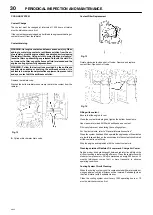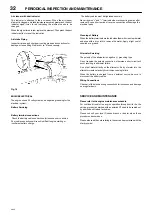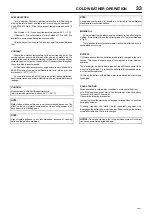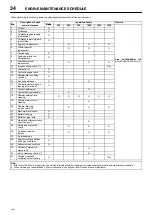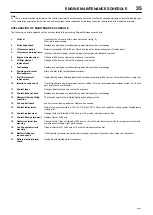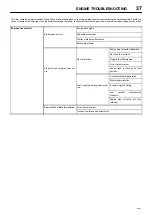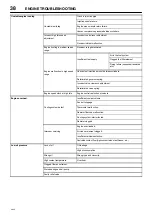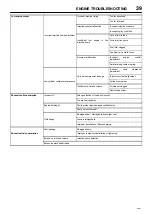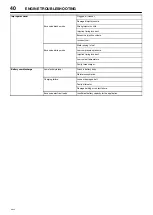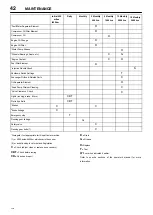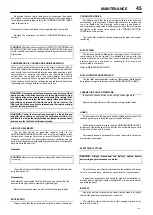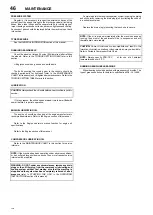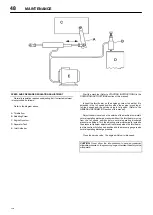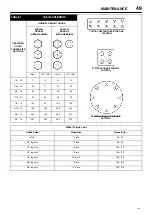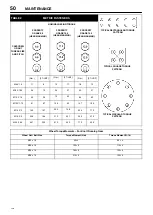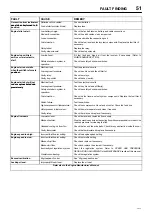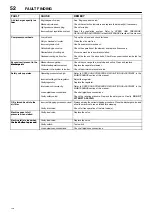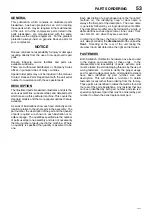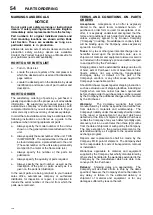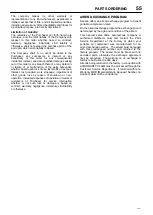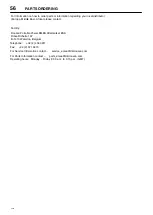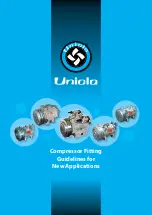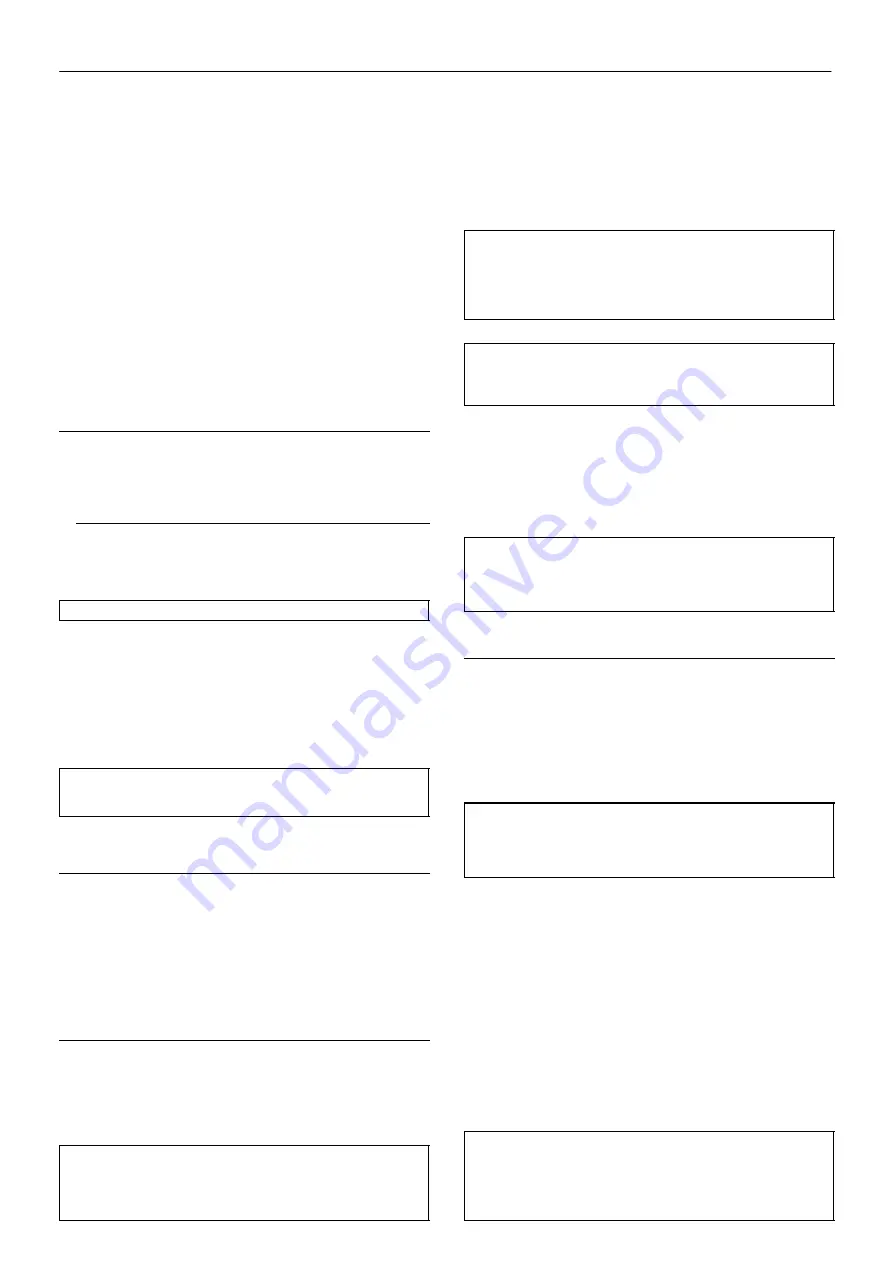
MAINTENANCE
44
9/235
. all hazards present are known (e.g. pressurised components,
electrically live components, removed panels, covers and guards,
extreme temperatures, inflow and outflow of air, intermittently moving
parts, safety valve discharge etc.).
. appropriate personal protective equipment is worn.
. loose clothing, jewellery, long hair etc. is made safe.
. warning signs indicating that
Maintenance Work is in Progress
are
posted in a position that can be clearly seen.
Upon completion of maintenance tasks and prior to returning
the machine into service, ensure that:
−
. the machine is suitably tested.
. all guards and safety protection devices are refitted.
. all panels are replaced, canopy and doors closed.
. hazardous materials are effectively contained and disposed of.
PROTECTIVE SHUTDOWN SYSTEM
Refer to the Wedge diagnostic display codes table for a listing of
shutdown conditions.
Low engine fuel level switch.
Test the low engine fuel level switch circuit as follows:
.
Start the machine.
Note:
Do not press the load button.
.
Disconnect the switch, the machine should shutdown.
.
Re
−
connect the switch.
Test the low engine fuel level switch by removing and operating
the float manually.
CAUTION:
Never remove or replace switches when the machine
is running.
SCAVENGE LINE
The scavenge line runs from the combined orifice/drop tube in the
separator tank, to the orifice fitting located in the airend.
Check that the scavenge line and tube are clear of any
obstruction each time the compressor lubricant is changed as any
blockage will result in oil carryover into the discharge air.
COMPRESSOR OIL FILTER
Refer to the
MAINTENANCE CHART
in this section for the
recommended servicing intervals.
Removal
WARNING: Do not remove the filter(s) without first making sure
that the machine is stopped and the system has been completely
relieved of all air pressure.
(Refer to
STOPPING THE UNIT
in the
OPERATING INSTRUCTIONS
section of this manual).
Clean the exterior of the filter housing and remove the
spin
−
on
element by turning it in a counter
−
clockwise direction.
Inspection
Inspect the oil filter head to be sure the gasket was removed with
the oil filter element. Clean the gasket seal area on the oil filter head.
CAUTION:
If there is any indication of the formation of varnishes,
shellacs or lacquers on the filter element, it is a warning that the
compressor lubricating and cooling oil has deteriorated and that it
should be changed immediately. Refer to LUBRICATION later in this
section.
NOTICE:
Installing a new oil filter element when the old gasket
remains on the filter head, will cause an oil leak and can cause
property damage.
Reassembly
Clean the filter gasket contact area and install the new element by
screwing in a clockwise direction until the gasket makes contact with
the filter housing. Tighten a further
1
/
2
to
3
/
4
of a revolution.
CAUTION:
Start the machine (refer to PRIOR TO STARTING and
STARTING THE UNIT in the OPERATING INSTRUCTIONS section
of this manual) and check for leakage before the machine is put back
into service.
COMPRESSOR OIL SEPARATOR ELEMENT
Refer to the
MAINTENANCE CHART
in this section for the
recommended servicing intervals.
If, however, the element has to be replaced, then proceed as
follows:
Removal
WARNING: Do not remove the filter(s) without first making sure
that the machine is stopped and the system has been completely
relieved of all air pressure.
(Refer to
STOPPING THE UNIT
in the
OPERATING INSTRUCTIONS
section of this manual).
Disconnect all hoses and tubes from the separator tank cover plate.
Remove the drop
−
tube from the separator tank cover plate and then
remove the cover plate. Remove the separator element.
Inspection
Examine the filter element. Examine all hoses and tubes, and
replace if necessary.
Reassembly
Thoroughly clean the orifice/drop tube and filter gasket contact area
before reassembly. Install the new element.
WARNING
Do not remove the staple from the anti
−
static gasket on the
separator element since it serves to ground any possible static
build
−
up.
Do not use gasket sealant since this will affect electrical
conductance.

